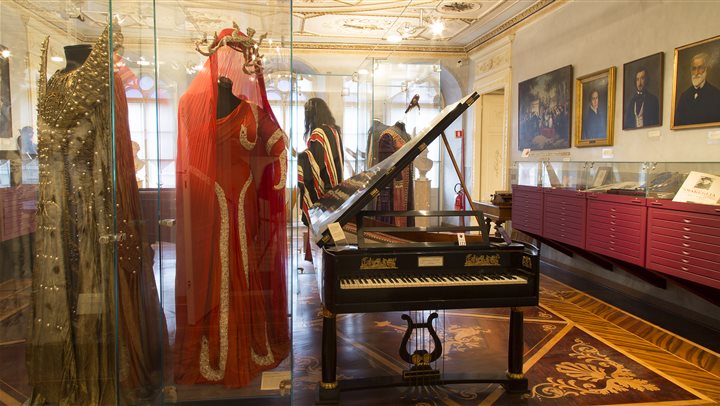Palace Gopcevich
The building was designed by the Triestine architect Giovanni Berlam (1823-1892) on commission by Spiridione Gopcevich, a renowned member of an old and noble Serbian family of Montenegrin descent.
The Gopcevich family belongs to the Serbian community in Trieste and it played a crucial role in the second half of the XVIII century and throughout the XIX century; the palace is a sign of Spiridione Gopcevich's impressive social standing. Deep in the Borgo Teresiano, facing the Canal Grande, Palazzo Gopcevich lies in the heart of the city, near the harbour and the former trade area of Trieste; it used to host the business of the Gopcevich family, with its offices and warehouses, as well as serve as a residence for the family members.
The construction began in 1850. The building is one of the first and most important examples of Eclecticism in Trieste; indeed, Giovanni Berlam was one of the first Triestine architects to work with a variety of different historic architectural styles.
The building reminds of the style employed in Lombardy in the XV century, with its double arched windows, the decorative plasterwork inspired by the decoration of Palazzo Vendramin Calergi in Venice, and the corbel statues in the Certosa di Pavia.
The windows on the first floor are decorated by four lunettes containing marble and marble-like statues representing the Serbian monarchs: from left to right, tsarina Milica, tsar Làzar, the knight Miloš Óbilić and the "Kosovo Maiden", the main figures of the epic Battle of Kosovo (June 15, 1389) between the Serbian and the Turkish armies.
However, it is inside the palace, especially on the first floor, that the family's wealth really stands out: rich ceiling decorations with plaster and tempera and refined wooden floors with mother-of-pearl marquetry make you fully appreciate the family's standing.
The building was bought in 1998 by the municipal district of Trieste and today it hosts the Civic Theatre Museum "Carlo Schmidl", focusing on the theatre and music scene in Trieste from the XVIII century until today. Among other pieces are stage jewels and costumes, posters, fliers, photographs, prints, medals, paintings, musical instruments and autographed manuscripts, together with other objects and archive material.
The Theatre Museum of Trieste was founded in 1924 by the Triestine music publisher and collector Carlo Schmidt (1859-1943) and it was hosted until 1991 in the Municipal Theatre "Giuseppe Verdi". In 1992 it was temporarily moved to Palazzo Morpurgo in via Imbriani, and on December 16, 2006 it was opened in Palazzo Gopcevich.
The two faces of the museum - both as a place for exhibitions and a centre for documentary research - can be found again in the division of the areas inside the palace. The splendid marquetry of the floors and the rich decorations of the ceilings on the first floor lead the visitors on a journey through the history of the theatre buildings and the main figures of the music and theatre scene in Trieste over a period of two centuries. A substantial section of the exhibition is a collection of both European and Non-European musical instruments and it hosts a faithful reconstruction of the workshop of the Triestine luthier Francesco Zapelli. An additional part of the instrument collection, with particular reference to mechanical instruments, can also be found on the second floor, together with the documentation and consultation services and a further area dedicated to the memory of Giorgio Strehler, whose personal archive is kept in the museum as well.
The museum hosts a large number of relics, from dolls and puppets to various objects which once belonged to artists, stage costumes and jewels (among the newly acquired pieces are the costumes which once belonged to the renowned Triestine mezzo-soprano Fedora Barbieri). The museum also hosts a collection of various paintings - mostly portraits of actors and musicians - and a number of prints portraying artists and theatre locations, as well as a medal collection of about a thousand pieces and some sketches and croquis drawings for operas, operettas and works of prose which went on stage in the theatres of Trieste.
Civic Theatre Museum "Carlo Schmidl"







